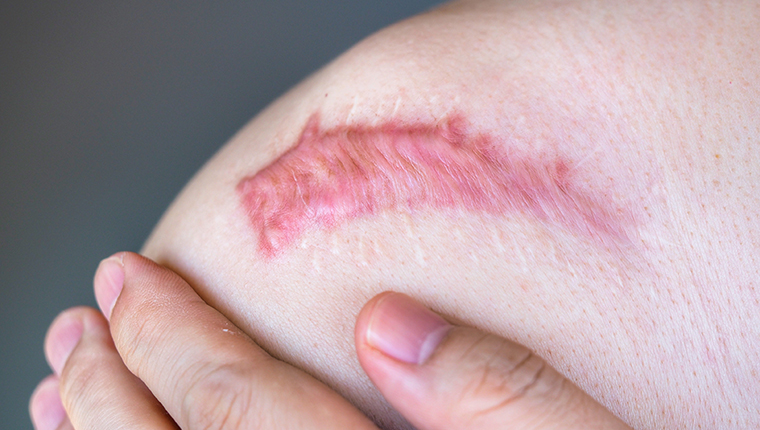Dermatology

Scars and keloids
In each injury, the healing mechanism of the body is activated to restore the tissue, both in terms of structure and function, to its original state. In some cases, this healing mechanism is disrupted, resulting in either skin hyperplasia at the site of injury or in incomplete healing. In any case there are esthetic issues arising from it.
Symptoms
Atrophic scars form a shallow depression locally on the skin due to collagen damage, fat or other tissues under the skin, which are caused by acne, chickenpox, surgery and injuries.
Keloids and hypertrophic scars cause swelling in the skin and are created when the body produces too much collagen during the wound healing process. Hypertrophic scars are usually thick, appear shortly after the injury and typically improve over time. Keloids are scars that have escaped from the margins of the initial incision, and are larger in size than hypertrophic scars. Their more frequent sites of occurrence are the back, the chest and the neck, as well as the chin and the ear lobes. They are raised, red and very often cause itching and pain. Finally, keloids do not recede nor do they become milder over time.
Treatment
At LP Clinic after completing a clinical examination and taking a brief history, the dermatologist will discuss with you the treatment indicated for your case. Treatment of scars and keloids is a long and demanding process. It is often necessary to regularly repeat sessions to achieve the desired result. Treatment is mainly applied by injectable steroids and cryotherapy. Also, the application of special regenerative creams, as well as sunscreen is imperative in all cases to avoid discolorations.
A. A keloid may reoccur, after being initially removed, because your body tends to generate them. Therefore, try to avoid injuries, don’t have tattoos and avoid any skin resection unless necessary. To address this, we recommend triamsinolon and cryotherapy using a special needle.
A. Scars from acne are quite difficult to treat. Laser treatment and chemical peels are recommended. The best treatment, however, remains prevention, so acne should be treated early to avoid permanent damage and scarring.